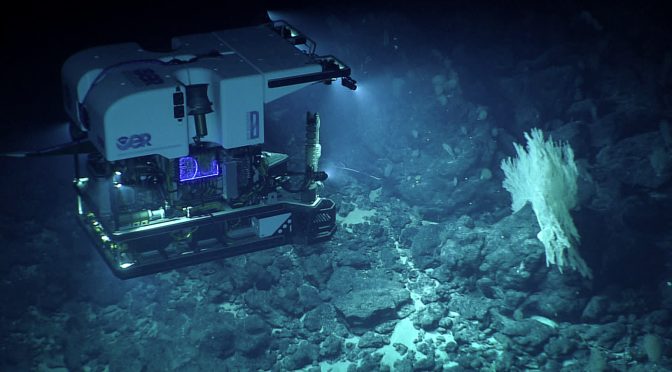Notes to the New CNO Topic Week
By David Strachan
Undersea warfare is entering an era of profound transformation due to the increasing sophistication and proliferation of unmanned systems. But while their roles, missions, and concepts of operation have been thoroughly analyzed, the ultimate deployment of autonomous, expendable vehicles in a shadowy, hostile environment could unfold in ways that have yet to be fully imagined. When this is considered against the current geopolitical backdrop of hybrid warfare and gray zone operations (with the line separating competition from conflict growing blurrier by the day), conditions are ripe for the emergence of a new front in great power rivalry that could redefine the very nature of undersea warfare.
Operating within an opaque, clandestine domain, autonomous undersea vehicles (AUVs) will employ kinetic and non-kinetic means to disrupt, degrade, and destroy, subsuming every aspect of undersea warfare under the umbrella of autonomous undersea conflict, including:
- ISR: AUVs will conduct and actively counter covert monitoring of maritime operations on the high seas, in the littorals, and within ports, coastal facilities, and inland waters.
- Mine Warfare: No longer simply “weapons that wait,” AUVs will surveil, penetrate, blockade, stalk, strike, and defend against such operations by adversary vehicles.
- ASW: AUVs will detect, classify, track and engage adversary submersibles, and will actively disrupt and degrade adversary ASW operations.
- Seabed Warfare: AUVs will disrupt, infiltrate, strike and defend critical seabed infrastructure, such as undersea cables, recharging and data exfiltration stations, and listening posts.
In order to prepare for autonomous undersea conflict, future force investments should emphasize the counter-UUV (CUUV) mission, specifically:
- Artificial Intelligence: CUUV operations will require highly advanced AI, as they will occur in a complex, dynamic, communications-denied environment, and under intense conditions that demand rapid-fire decision-making based on real-time situational and contextual awareness.
- Energy: The complexity of CUUV operations will demand high levels of stored energy to power advanced processing and sophisticated payloads, as well as the propulsive power and maneuverability required for kinetic engagements.
- Collaboration: Pods of AUVs working together will provide expendability, redundancy, wide operating coverage, and will provide tactical overmatch during CUUV engagements.
- Miniaturization: Small, expendable, agile, and lethal AUVs will be preferable to slower, larger, high-value AUVs which will be vulnerable to adversary CUUV operations.
- Weaponization: CUUV operations will include non-kinetic effects to deceive, disrupt and degrade, and to infiltrate adversary undersea networks. Kinetic effects will include proximity and contact detonation for near or complete target neutralization, or “true” kinetic energy strikes to achieve mission kills.
For now, autonomous undersea conflict is the stuff of science fiction, and perhaps this vision may not come to fruition within the next few years. But an autonomous undersea revolution is coming, and with it the need to anticipate and prepare for the myriad operational scenarios that could ensue. The plans laid today will ensure that the Navy stands ready to confront the challenges and opportunities of tomorrow.
David R. Strachan is a naval analyst and founder of Strikepod Systems LLC (strikepod.com), a provider of current and strategic fiction intelligence (FICINT) on global naval affairs, with an emphasis on unmanned undersea systems. He can be found on Twitter @Strikepod, and can be reached at david.strachan@strikepod.com.
Featured Image: ROV Deep Discoverer documents the benthic communities at Paganini Seamount during the Deep-Sea Symphony: Exploring the Musicians Seamounts expedition. (Image courtesy of the NOAA Office of Ocean Exploration and Research, Deep-Sea Symphony: Exploring the Musicians Seamounts.)


What that will do to the marine biological world remains to be endured.